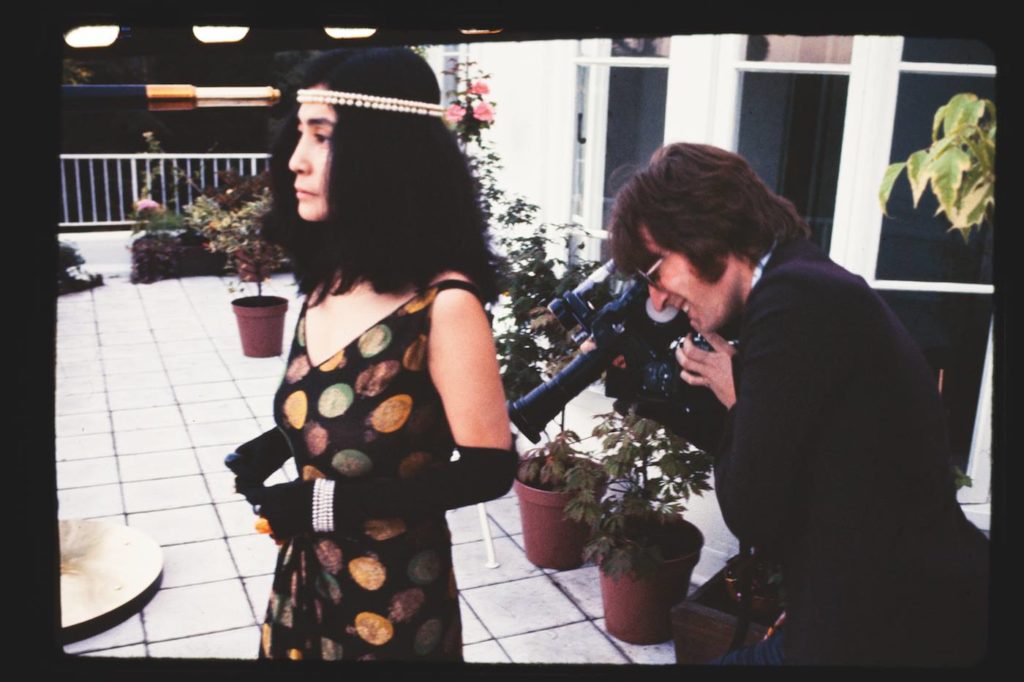
John Lennon is known to most as the leader of The Beatles. In addition to being a songwriter, Lennon was a poet, a humorist, an illustrator and play-write. However, with his second wife Yoko Ono, Lennon began a foray into film. The cause of this seems directly Ono’s doing. An avant-garde performance artist from New York, Ono was surrounded and influenced by the films of Warhol, Mekas, Brakhage, etc. And it is these filmmakers that will inform the work in film that she and her husband would complete in the early seventies.
Some of their work together was strictly conceptual. Their film Rape (1969) consists of a series of long shots as the camera pursues a young woman. Rape spoke to both the voyeuristic tendencies of the cinema as well as to the feminist movement (the same could be said for their follow up film Fly from 1970). Conceptual films like these were being produced in abundance in the early seventies, and it is clear that Lennon and Ono’s work in this style is not among the best. Though it should be noted that these exercises in conceptual filmmaking laid the groundwork for much of the writing in Lennon’s third book Sky Writing By Word Of Mouth.
The importance of Lennon and Ono as filmmakers comes instead from their album long promotional film Imagine(1971). Until that time, promotional videos in the music business were either designed to re-create live performances, tell the story of the song, or to simply photograph the musicians against a scenic landscape. Lennon and Ono did away with the plasticity that defined the promotional films of other bands, preferring a kind of intimate montage of portraiture.
Lennon photographer Daniel Richter and director Steve Gebhardt are the two responsible for capturing the images that the Lennons designed onto film. Lennon and Ono typically devised a situation that reenacted an activity from their daily lives. At other times, segments are made up of footage that is “non-fiction”, taken without the direction of Lennon or Ono as a documentary. One such a moment is the scene that accompanies Crippled Inside. The footage was shot by Richter while the Lennons hosted a party. The footage captures a more natural Lennon than that which appears in the “staged” segments but also features Andy Warhol, who attended the party.
The inclusion of Warhol is an important one. It established both Lennon and Ono as serious artists before their move to New York in 1972. Warhol is also largely responsible for the film esthetic the Lennons use. All of Warhol’s early films consist of friends and hangers-on reenacting what they would normally do for Warhol’s camera. That the Lennons implemented this approach in an entirely commercial form of filmmaking is the primary innovation here. By doing this they instill the authenticity of a D.A. Pennebacker film into something that is almost completely artificial and intended to help record sales.
Watching Imagine today, the film seems awkward and corny, obviously artificial and pretentious. But if you were watching the Mike Douglas Show in 1972, you wouldn’t have ever seen anything like this. Though its longevity may be limited to die hard John Lennon fans, the historical significance of Imagine should not be forgotten.
